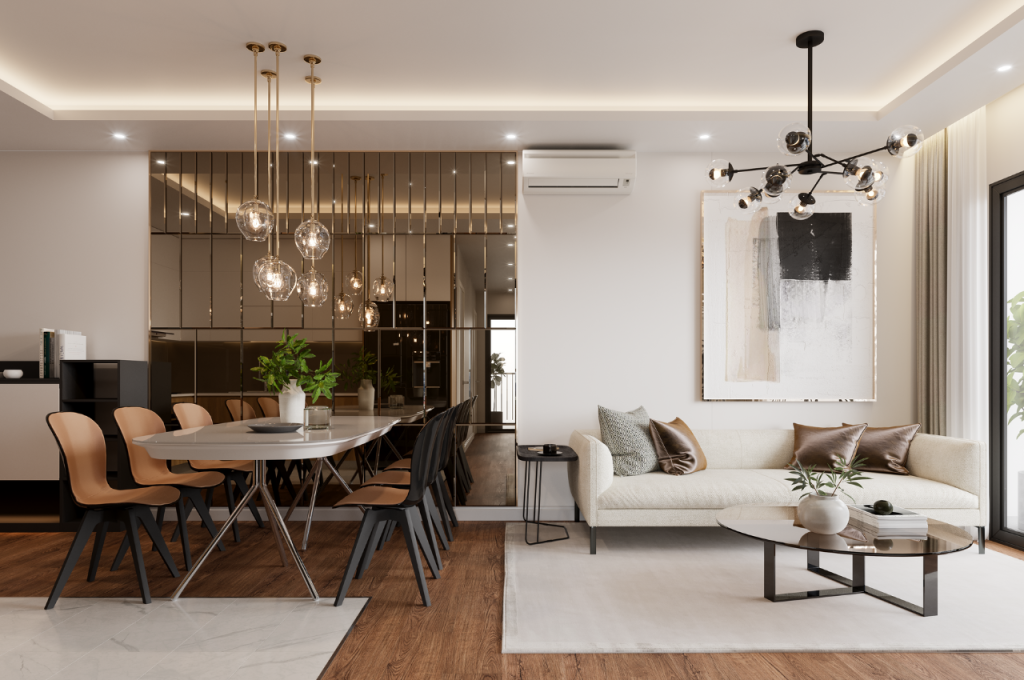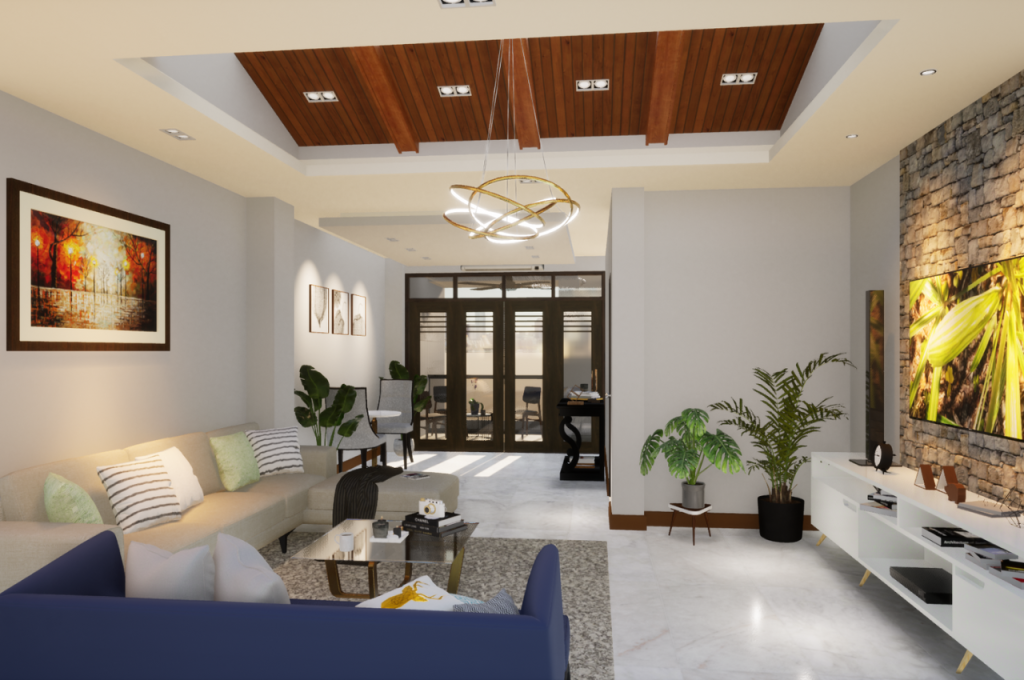Basic principles of interior design include harmony, balance, contrast, rhythm, and emphasis. These principles guide designers in creating cohesive and visually appealing spaces.
Interior design is more than just choosing furniture and paint colors – it involves an understanding of fundamental design principles to create functional and aesthetically pleasing spaces. Harmony ensures that all elements work together seamlessly, while balance distributes visual weight evenly.
Contrast adds interest, rhythm creates movement, and emphasis highlights focal points. By incorporating these principles, interior designers can create spaces that are both visually appealing and functional, resulting in a harmonious and balanced environment that reflects the needs and tastes of the occupants. Understanding these principles is essential for anyone looking to create a well-designed and inviting space that effectively utilizes the principles of interior design.
The Importance of Interior Design
Interior design is an essential aspect of creating functional and aesthetically pleasing living and workspaces. It goes beyond mere decoration, influencing the way spaces are utilized and experienced. Here are some key principles that underscore the importance of interior design:

Creating Functional Spaces
Functional spaces are crucial in optimizing the usability of a room. Through effective design, interior designers allocate space in a way that streamlines traffic flow and enhances usability.
Enhancing Quality of Life
Interior design significantly impacts the atmosphere and ambiance of a space, affecting people’s emotional and psychological well-being. When thoughtfully executed, it can elevate the quality of life by creating a comfortable and harmonious environment.
Fundamental Elements of Interior Design
Interior design is a multifaceted discipline that combines art, science, and creativity to create functional and aesthetically pleasing spaces. Understanding the fundamental elements of interior design is essential for crafting spaces that are both beautiful and functional. In this guide, we’ll explore the key elements of interior design, including space, line, form, light, color, texture, and pattern. By mastering these elements, you can unlock the secrets to creating spaces and enhancing the quality of life.
Space
Space is the foundation of interior design and refers to the physical dimensions and boundaries of a room. Understanding how to manipulate space through arrangement, layout, and organization is essential for creating functional and visually appealing interiors.
Line and Form
Line and form are fundamental elements of interior design that contribute to the overall structure, balance, and visual appeal of a space.
Light
Light is a powerful design element that influences mood, atmosphere, and perception. Natural light enhances the beauty of a space and promotes well-being, while artificial light provides illumination and highlights architectural features.
Color
Colors influence emotions and perceptions in interior design. Understanding how to use color effectively through wall paint, furniture, accessories, and artwork is essential for creating a cohesive and harmonious interior.
Texture
Texture is a fundamental element of interior design that adds depth, visual interest, and tactile appeal to a space. You can enhance the richness and warmth of a room, creating a more dynamic and inviting interior.
Pattern
Patterns introduce visual interest and character to the interior design. It refers to the repeated decorative motif or design found in textiles, wallpaper, flooring, and accessories.
Principles of Interior Design
Interior design is a harmonious blend of art and science that creates aesthetically pleasing and functional spaces. By applying the principles of interior design, designers achieve well-balanced and visually appealing spaces. These principles guide designers in creating beautiful interiors that reflect the client’s style and enhance the overall ambiance of a space. Let’s explore the fundamental principles of interior design that form the foundation of every successful design project.
Balance
Balance is the distribution of visual weight in a space. It helps create a sense of equilibrium and stability. There are three types of balance: symmetrical, asymmetrical, and radial.
In symmetrical balance, objects are evenly placed around a central axis, creating a mirror effect. This creates a formal and traditional feel.
Radial balance is achieved when elements radiate from a central point. This type of balance is often seen in round or circular layouts.
Emphasis
Emphasis is used to create a focal point or draw attention to a specific area or object in a space. This can be achieved through color, texture, pattern, or the arrangement of furniture and accessories. By adding emphasis, designers can create visual interest and emphasize the unique features of a room.
Rhythm
Rhythm in interior design refers to the repetition or alternation of elements, creating a sense of movement and flow. This can be achieved through the use of patterns, colors, or textures. Rhythm helps create a sense of harmony and adds visual interest to a space.
Proportion
Proportion is the relationship between objects and their size, shape, and placement in a space. It helps create a balanced and harmonious composition. By considering scale and proportion, designers ensure that objects relate to each other and to the overall space in a visually pleasing way.
Harmony
Harmony in interior design is achieved when all elements of a space work together to create a cohesive and unified whole. This includes the selection of colors, textures, patterns, and materials that complement each other. Harmony creates a sense of balance and visual appeal, making a space feel inviting and harmonious.
Unity
Unity in interior design refers to the cohesive relationship between all elements in a space. It ensures that all components work together to create a harmonious and visually pleasing environment. Unity is achieved through careful selection and coordination of colors, textures, patterns, and materials.
Understanding Visual Harmony
Understanding visual harmony is essential in interior design to create a cohesive and pleasing space.
Creating A Cohesive Environment
Striving to create a cohesive environment in interior design is critical for the overall success of the space.
Balancing Visual Elements
Balancing visual elements ensures an even distribution of weight in the design.
Implementing Visual Harmony in Design
Creating a visually harmonious interior design is the key to transforming any space into a haven of tranquility and balance. By carefully considering elements such as furniture arrangement, color schemes, and lighting choices, you can create a cohesive and inviting atmosphere that will captivate the senses and bring harmony to your living space. Let’s explore each of these elements further:

Furniture Arrangement
Furniture arrangement plays a significant role in achieving visual harmony in your interior design. By ensuring that your furniture is arranged in a balanced and cohesive manner, you can create a sense of unity and flow in the space.
Color Schemes
Choosing the right color schemes can greatly contribute to the visual harmony of your interior design. By selecting complementary colors or using a monochromatic palette, you can enhance the overall balance and coherence of the space.
Lighting Choices
The lighting choices you make have a profound impact on the ambiance of your living space. By incorporating a combination of natural and artificial light sources, you can create depth and dimension, while strategically placed lighting fixtures can emphasize focal points and add visual interest to the room.
The Role of Contrast and Focal Points
Contrast plays a crucial role in interior design, creating visual interest and depth. Focal points draw attention to specific areas, adding character and defining the overall aesthetic. Learn how these basic principles enhance the look and feel of your space.
The Role of Contrast and Focal Points Interior design is not just about arranging furniture and selecting colors; it’s also about creating visual interest and directing attention. The role of contrast and focal points in interior design is crucial for achieving a well-balanced and visually appealing space.
Creating Visual Interest
In interior design, creating visual interest involves using contrasting elements to add depth and excitement to a space. This can be achieved through a variety of techniques, such as combining different textures, colors, shapes, and patterns. Bold patterns and colors can create a striking contrast, while subtle variations in texture can add a layer of complexity to a room.
Directing Attention
Focal points are essential for directing attention within a space. They serve as visual anchors, drawing the eye and creating a sense of balance and harmony. Designating a focal point can be as simple as highlighting a unique architectural feature or an eye-catching piece of furniture. Using lighting strategically can also draw attention to specific areas of a room, emphasizing their significance in the overall design.
Achieving Balance and Symmetry
When it comes to creating an aesthetically pleasing interior space, achieving balance and symmetry is crucial. By carefully arranging elements within a room, you can create a sense of harmony and visual appeal. In this article, we will explore the basic principles of interior design, focusing on how to achieve balance and symmetry in your space.
Symmetrical Layouts
Symmetry is perhaps the most traditional approach to achieving balance in interior design. A symmetrical layout involves the exact replication of objects or elements on either side of a central axis. This creates a sense of order and stability. To achieve a symmetrical look, consider the following tips:
- Use identical furniture pieces on each side of an axis, such as a central fireplace or window.
- Place two identical objects, such as lamps or side tables, on either side of a sofa or bed.
- Ensure the visual weight of each element is even so that neither side feels heavier than the other.
Asymmetrical Balance
While symmetry can create a classic and formal look, asymmetrical balance offers a more modern and dynamic approach to interior design. Asymmetry involves arranging objects or elements to create balance through contrast and harmony. Here are some ways to achieve asymmetrical balance:
- Group objects of different sizes, shapes, and colors together, ensuring they visually balance each other.
- Create a focal point on one side of the room and balance it with smaller, complementing elements on the opposite side.
- Use contrasting textures, patterns, or materials to add visual interest and balance.
Remember, achieving balance and symmetry is not about having an exact mirror image on each side of a room. It is about creating a visually pleasing composition that satisfies the eye. Whether you prefer a symmetrical or asymmetrical layout, the key is to carefully consider the placement and arrangement of elements to achieve harmony and balance.
Applying Principles to Different Design Styles
Applying design principles to different styles is essential for creating cohesive and harmonious interiors that reflect the desired aesthetic while maintaining functionality.
Modern and Contemporary
In modern and contemporary design, clean lines and minimalism are key. Utilize open spaces and neutral color palettes to create a sleek and sophisticated look.
Traditional and Transitional
While transitional design blends both traditional and modern elements for a timeless appeal.

Eclectic and Bohemian
Eclectic styles allow for mixing different textures, patterns, and colors, while Bohemian design embraces a free-spirited and vibrant aesthetic.
Frequently Asked Questions
Sure, here are some frequently asked questions (FAQs) about interior design:
1. What are the key elements of interior design?
Interior design includes elements like color, texture, lighting, furniture, and accessories. These elements work together to create a cohesive and visually appealing space.
2. How can I make a small room feel bigger?
To make a small room feel bigger, use light colors, maximize natural light, declutter, use mirrors, and incorporate multi-functional furniture pieces to optimize space efficiently.
3. Why is lighting important in interior design?
Lighting plays a crucial role in setting the mood, highlighting architectural features, and enhancing the overall ambiance of a space. Proper lighting can transform the feel and functionality of a room.
Conclusion
Incorporating these interior design principles can transform your space into a stylish oasis. Remember to balance colors and textures while maximizing functionality. Keep in mind the importance of lighting and scale to create a harmonious environment.
By following these basic guidelines, you can enjoy a space that is both visually appealing and functional.

